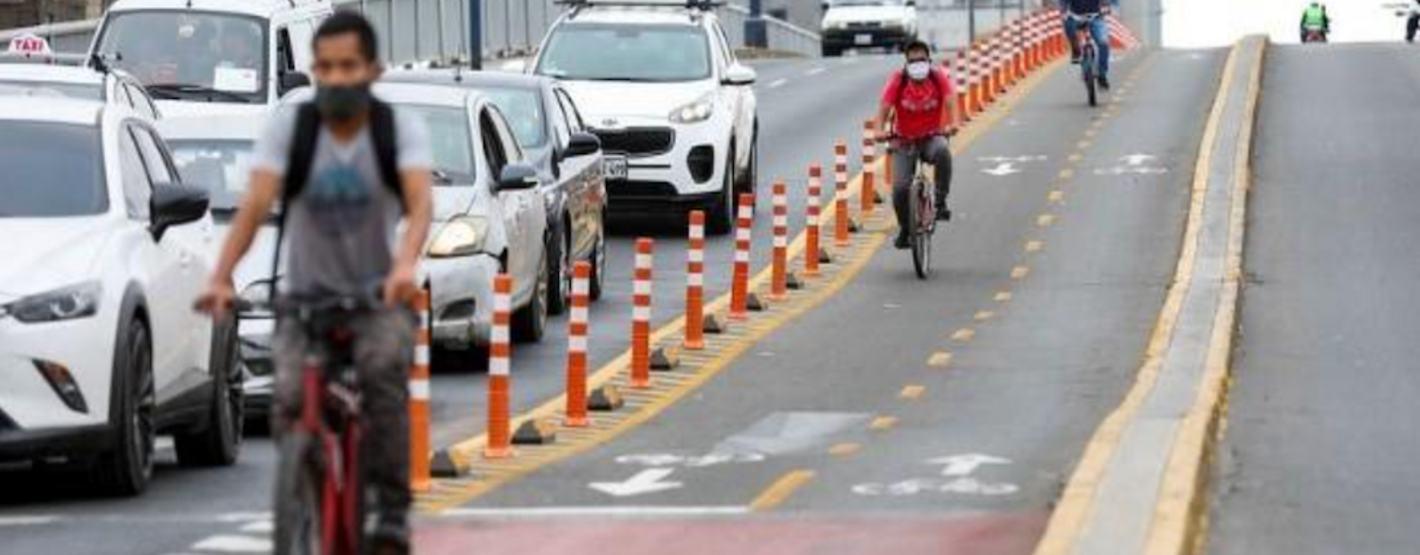
Concerned about the risk of crowded public transport during the COVID-19 outbreak, the capital of Peru is strengthening its cycling infrastructure with almost 50 km of emergency cycle lanes and additional parking.
“This is an initiative that we needed not only as a preventive measure for COVID-19, but also to help our citizens choose a healthier and more eco-friendly alternative,” said Lima Mayor Jorge Muñoz. “It also goes hand in hand with our Yo Respeto (I Respect) campaign which promotes road safety.”
Lima is better known for its back-to-back traffic and packed micros and combis (buses and vans) alongside its ceviche, but it may soon be known for its cyclist culture as well. On 4 May, work commenced on 46 km of emergency cycle lanes and additional cycle parking. When deciding on which roads to temporarily reconfigure, Lima prioritized routes which would connect with their existing 227 km cycle network and facilitate access to public services such as hospitals. Across the city, twelve locations were selected to benefit from parking infrastructure, each with the capacity for 20 bicycles. By August, over 13 km of new cycle lanes were open for Lima residents.
“While Improving walking and cycling networks has been a key WHO recommendation for general health pre-COVID-19, it is great to see its added value during the pandemic,” said Rubén Mayorga, acting PAHO/WHO Representative in Peru.
Road safety was also given top priority as the city opted to protect two-way bike lanes with vertical bollards, rubber humps, painted markings, separating the cycle lanes from the roadway, and dedicated traffic lights.
The city is already making moves towards long-term change beyond the emergency. In June, the national Ministry of Transport and Communication of Peru accelerated the approval of national legislation which promotes and regulates the use of the bicycle as a sustainable mode of transport. In Lima, the city authorities are evaluating the success of their measures and planning to make their emergency cycle infrastructure a permanent feature. Their experience has shown that with the right political will and policy landscape, mobility habits can be shifted to deliver long-term benefits in both population and environmental health.
Lima’s COVID-19 response has also included a three-prong project with the Partnership for Healthy Cities, a global initiative funded by Bloomberg Philanthropies, in collaboration with the WHO and Vital Strategies.
“COVID-19 containment measures are not always about restrictions, it can also about introducing new facilities and creating more freedom for citizens, as Lima proves,” said Mayorga.



